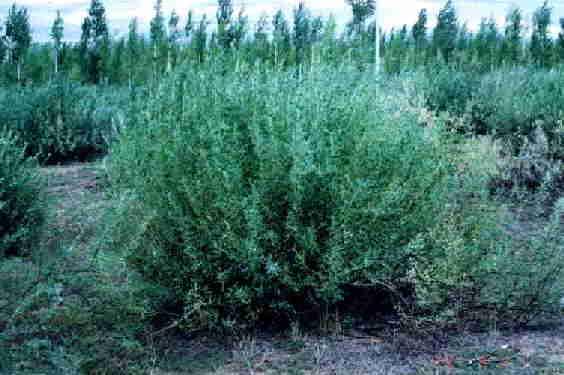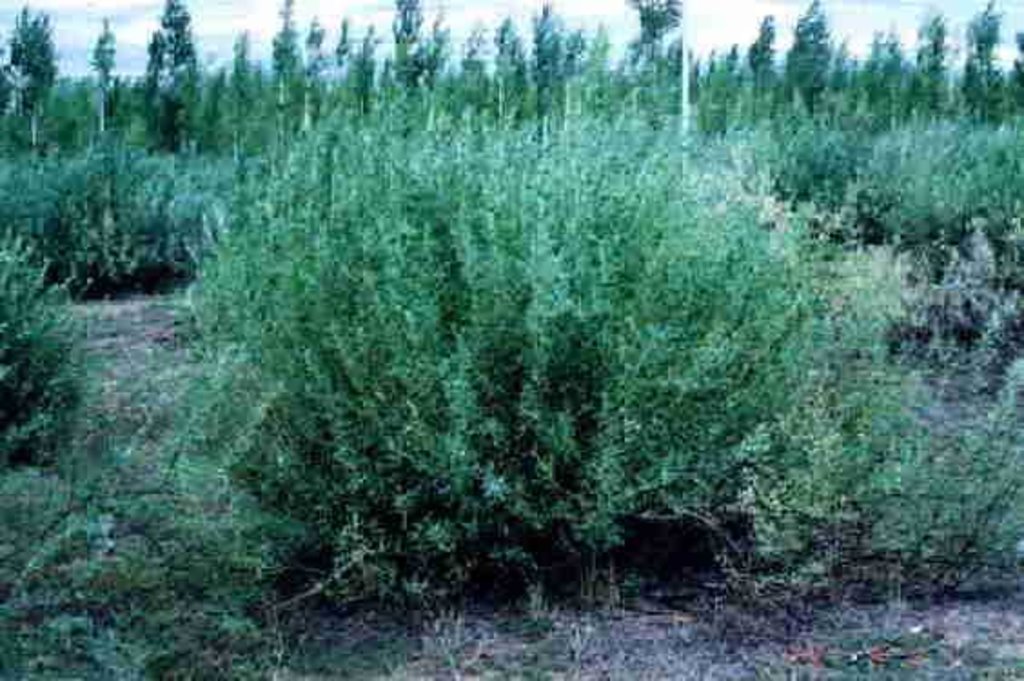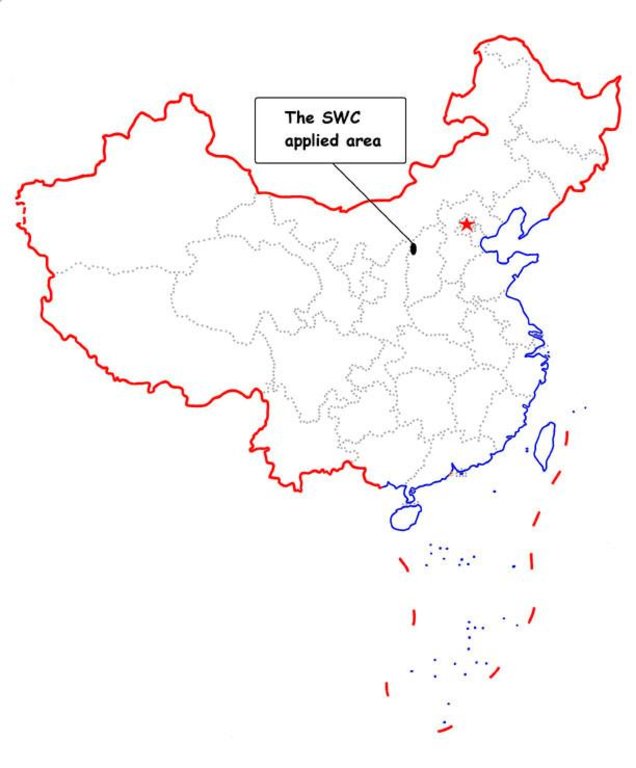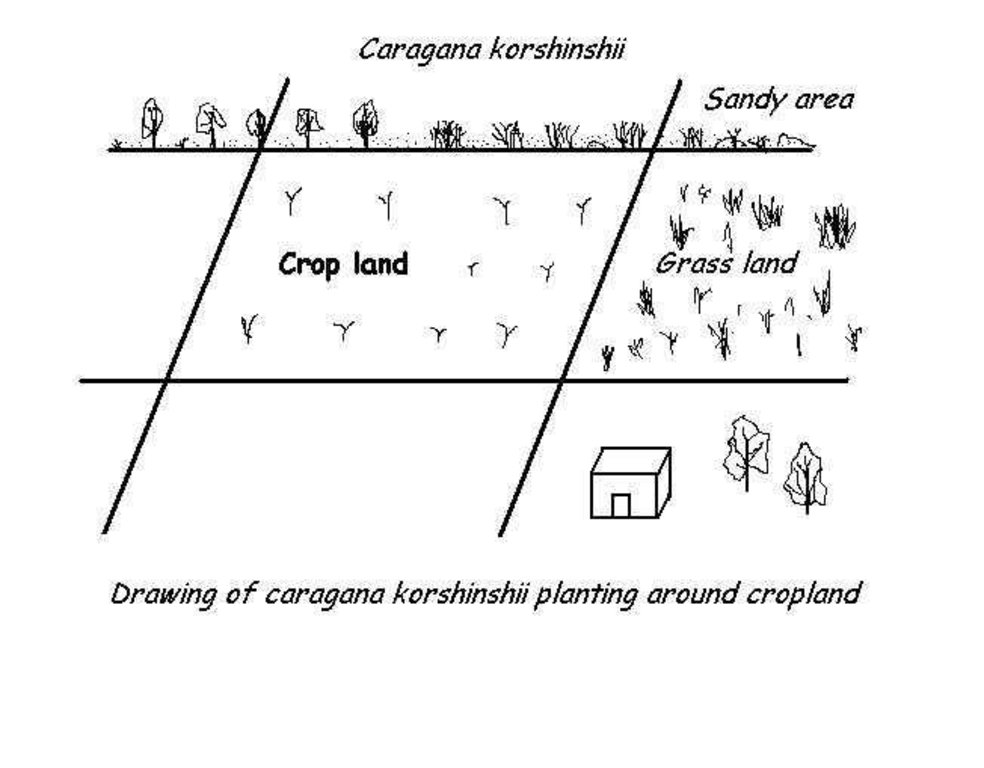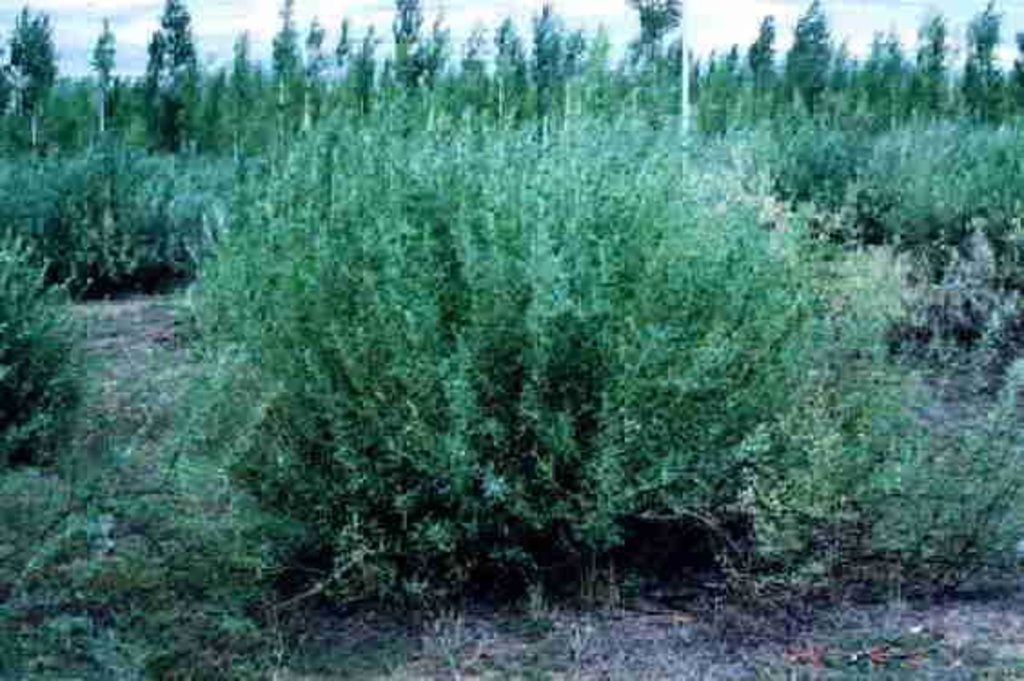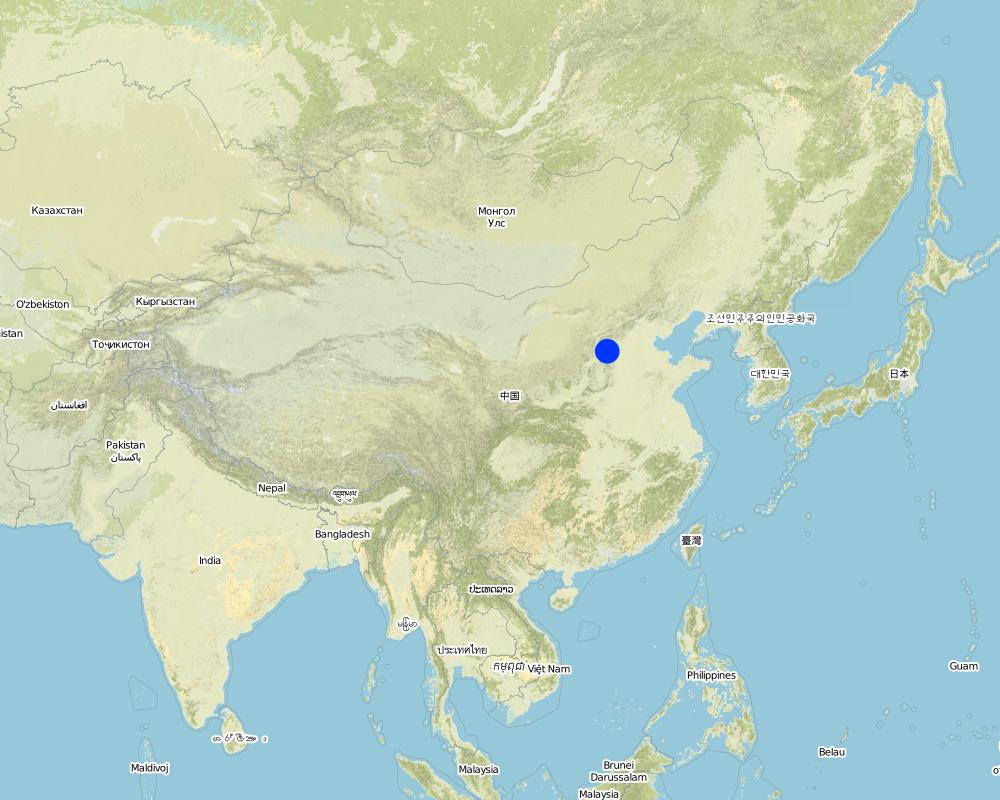Caragana Korshinskii Planting - a SWC vegetation technology [China]
- Criação:
- Atualização:
- Compilador/a: Jinsheng FU
- Editor: –
- Revisor: David Streiff
approaches_2395 - China
Veja as seções
Expandir tudo Recolher tudo1. Informação geral
1.2 Detalhes do contato das pessoas capacitadas e instituições envolvidas na avaliação e documentação da abordagem
Especialista em GST:
Xie Mingshu
(8610) 62338043
Department of soil and water conservation, Beijing Forestry University
China
Nome da(s) instituição(ões) que facilitou(ram) a documentação/avaliação da Abordagem (se relevante)
Department of Resources and Environmental Science, Beijing Normal University (Department of Resources and Environmental Science, Beijing Normal University) - China1.3 Condições em relação ao uso da informação documentada através de WOCAT
O/a compilador/a e a(s) pessoa(s) capacitada(s) aceitam as condições relativas ao uso de dados documentados através da WOCAT:
Sim
1.4 Referência ao(s) questionário(s) sobre tecnologias da GST

Caragana Korshinskii Planting a kind of SWC vegetative … [China]
Caragana korshinskii, a kind of perennial shrub, is used to protect soil from water and wind erosion, rhizobium in its root can increase soil fertility.
- Compilador/a: Jinsheng FU
2. Descrição da abordagem de GST
2.1 Descrição curta da abordagem
SWC decision makers, I.e. approach planners, lead local people to plant caragana korshinskii in the areas of serious water and/or wind erosion by means of combined inputs from government, locals and social loan etc.
2.2 Descrição detalhada da abordagem
Descrição detalhada da abordagem:
Aims / objectives: The most important factor that hinders agricultural development in the Loess Plateau is soil and water loss. Many measures have been taking to conserve soil and water resources. Here is one of them using caragana korshinskii as one kind of SWC vegetation approach.
Methods: With its long roots, caragana korshinskii can improve soil infiltration and extract water from deep soil layer. It can also protect soil from water and wind erosion because it is tightly fixed in the soil. It has rhizobium in its roots to improve soil fertility. Besides, its branch has economic value. To carry out this approach, planners lead local farmers to plant caragana korshinskii in the areas of the serious water and/or wind erosion. Before planting, dipping selected seeds in brine with 1% concentration, and then moving them in warm water for about 24 hours to make them easier germinating. Caragana korshinskii can be planted in holes. Autumn is the best season for seeding, but if there is much rain in Spring, it is also ok. In the first three years, young plants are very frail. They should be protected from sheep eating and cutting. After four years, the branches of caragana korshinskii above ground can be cut according to their utilization. The more you cut the better they grow.
Role of stakeholders: Besides government leaders, local land users are also the most important participants, they accomplish most of planting and maintaining work. The Research Institute is another key participant, they provide the SWC knowledge and technology.
Other important information: Caragana korshinskii has many other advantages besides ecological benefits. It has many economic values, such as supplying forage for sheep and fuel for local residents, supplying raw material for paper making, supplying green manure and improving soil quality. Finance is mainly from government, partially from loan and local input(labor).
2.3 Fotos da abordagem
2.5 País/região/locais onde a abordagem foi aplicada
País:
China
Região/Estado/Província:
Shanxi
Map
×2.6 Datas de início e término da abordagem
Indique o ano de início:
1960
2.7 Tipo de abordagem
- Tradicional/Indígena
2.8 Principais metas/objetivos da abordagem
The Approach focused mainly on SLM with other activities (Sheep forage, paper making, fuel, green manure etc.)
Controlling water and/or wind erosion, preventing sand and dust storm.
The SLM Approach addressed the following problems: Water and/or wind erosion, inadequate fodder, poor local agricultural and economic development.
Caragana korshinskii is one of the most drought endurable shrubs. Once planted, caragana korshinskii grows very fast.
2.9 Condição que propiciam ou inibem a implementação de tecnologia/tecnologias aplicada(s) segundo a abordagem
Normas e valores sociais/culturais/religiosos
- Inibitivo
People there seldom care about the environment
Treatment through the SLM Approach: Education, propagandizing
Disponibilidade/acesso a recursos e serviços financeiros
- Inibitivo
There is not enough money
Treatment through the SLM Approach: National subsidy, loan, collecting money from public
Quadro jurídico (posse de terra, direitos de uso da terra e da água)
- Inibitivo
Lack of corresponding acts
Treatment through the SLM Approach: Enforcing legislation
The existing land ownership, land use rights / water rights hindered a little the approach implementation The state has ownership of the land resources, land users can only lease the land for a period of time, they worry about their land would be transferred to others.
Conhecimento sobre GST, acesso a suporte técnico
- Inibitivo
inadequate
Treatment through the SLM Approach: Learn from SWC specialists, introduce into new acquainted person
3. Participação e papel das partes interessadas envolvidas
3.1 Partes interessadas envolvidas na abordagem e seus papéis
- Usuários de terra/comunidades locais
Working land users were work equally divided between men and women (including all the local land users and government politicians)
Existing groups of land users
- Governo nacional (planejadores, responsáveis pelas decisões)
3.2 Envolvimento do usuários de terra/comunidades locais nas diferentes fases da abordagem
| Envolvimento do usuários de terra/comunidades locais | Especifique quem estava envolvido e descreva as atividades | |
|---|---|---|
| Iniciação/motivação | Participativo | public meetings |
| Planejamento | Nenhum | |
| Implementação | Participativo | casual labour |
| Monitoramento/avaliação | Automobilização | measurements/observations; |
| Research | Automobilização | measurements/observations; |
3.4 Decisão sobre a seleção de tecnologia/tecnologias de GST
Especifique quem decidiu sobre a seleção de tecnologia/tecnologias a serem implementadas:
- Políticos/líderes
Explique:
directive (top-down). Leaders are the key participants
Decisions on the method of implementing the SLM Technology were made by by politicians / leaders. consultative. From SWC specialist
4. Suporte técnico, reforço das capacidades e gestão do conhecimento
4.1 Reforço das capacidades/ formação
Foi oferecida formação aos usuários da terra/outras partes interessadas?
Sim
Especifique quem foi capacitado:
- Usuários de terra
- SWC specialists, extensionists/trainers, planners, politicians/decision makers
Tipo de formação:
- Agricultor para agricultor
- Áreas de demonstração
- Cursos
Assuntos abordados:
seed, establishment and maintenance of Caragana korshinskii
4.2 Serviço de consultoria
Os usuários de terra têm acesso a um serviço de consultoria?
Sim
Especifique se foi oferecido serviço de consultoria:
- nas áreas dos usuários da terra
Descreva/comentários:
Visiting demonstration areas; Key elements: Quality of the demonstration, Ability of visitors, Ability of hierophants; 1) Advisory service was carried out through: projects own extension structure and agents, government's existing extension system 2) Advisory service was carried out through: projects own extension structure and agents, government's existing extension system; Extension staff: mainly government employees 3) Target groups for extension: land users, technicians/SWC specialists; Activities: farm visits
Advisory service is quite adequate to ensure the continuation of land conservation activities; Activities of government influence the choice of land users greatly, usually by administration ways.
4.3 Fortalecimento da instituição (desenvolvimento organizacional)
As instituições foram fortalecidas ou estabelecidas através da abordagem?
- Sim, moderadamente
Especifique a que nível (níveis) as instituições foram fortalecidas ou estabelecidas:
- Local
Especifique o tipo de apoio:
- Financeiro
4.4 Monitoramento e avaliação
Monitoramento e avaliação são partes da abordagem?
Sim
Comentários:
bio-physical aspects were regular monitored by 0 through measurements; indicators: None
technical aspects were ad hoc monitored by 0 through observations; indicators: None
economic / production aspects were regular monitored by 0 through measurements; indicators: None
management of Approach aspects were None monitored by 0 through observations; indicators: None
There were few changes in the Approach as a result of monitoring and evaluation: planting density, frequency of caragana korshinikii branch cutting.
4.5 Pesquisa
A pesquisa foi parte da abordagem?
Sim
Especifique os tópicos:
- Economia/Marketing
- Ecologia
Dê mais detalhes e indique quem realizou a pesquisa:
comparing Caragana korshinskii with other kind of SWC vegetation species.
Research was carried out on station
5. Financiamento e apoio material externo
5.1 Orçamento anual para o componente de GST da abordagem
Caso o orçamento exato seja desconhecido, indique a faixa:
- 100.000-1.000.000
Comentários (p. ex. principais fontes de recursos/principais doadores):
Approach costs were met by the following donors: government (national - money, technology, planning): 25.0%; national non-government (money): 45.0%; local community / land user(s) (material, money, labor): 30.0%
5.2 Apoio financeiro/material concedido aos usuários da terra
Os usuários da terra receberam apoio financeiro/material para a implementação de tecnologia/tecnologias?
Sim
5.3 Subsídios para entradas específicas (incluindo mão-de-obra)
- Agrícola
| Especifique quais entradas foram subsidiadas | Em que medida | Especifique os subsídios |
|---|---|---|
| Sementes | ||
| Fertilizantes | Totalmente financiado | |
| seedlings and biocides | Parcialmente financiado | biocides are fully financed |
Se a mão-de-obra pelos usuários da terra foi uma entrada substancial, isso foi:
- Pago em dinheiro
Comentários:
Labour was also rewarded with sheep breed
5.4 Crédito
Foi concedido crédito segundo a abordagem para atividades de GST?
Sim
Especifique as condições (taxa de juros, reembolso, etc):
Interest rate charged: 0.7%
Interest was lower than market rate.
6. Análise de impactos e declarações finais
6.1 Impactos da abordagem
A abordagem auxiliou os usuários da terra a implementar e manter as tecnologias de GST?
- Não
- Sim, pouco
- Sim, moderadamente
- Sim, significativamente
They protect their cropland by applying vegetative measures such as planting caragana koshinskii around the land so that both increasing crop yield and additional income by feeding more sheep etc.
A abordagem melhorou as questões de posse de terra/diretos do usuário que inibiam a implementação das tecnologias de GST?
- Não
- Sim, pouco
- Sim, moderadamente
- Sim, significativamente
The approach could very little on it. The problem is likely to be overcome in the near future. By signing land use contract with land ownership.
Did other land users / projects adopt the Approach?
- Não
- Sim, pouco
- Sim, moderadamente
- Sim, significativamente
As one kind of vegetation method, it can be used with other approaches, such as check dam.
6.3 Atividades de sustentabilidade de abordagem
Os usuários da terra podem manter o que foi implementado através da abordagem (sem apoio externo)?
- Sim
6.4 Pontos fortes/vantagens da abordagem
| Pontos fortes/vantagens/oportunidades na visão do usuário da terra |
|---|
| Obtaining additional economic return (How to sustain/ enhance this strength: Developing Stockbreeding and increasing crop yield.) |
| low input and easy to implementing (How to sustain/ enhance this strength: Forbidding overgrazing and cutting.) |
| Pontos fortes/vantagens/oportunidades na visão do/a compilador/a ou de outra pessoa capacitada |
|---|
| Reducing wind and water erosion (How to sustain/ enhance this strength: Scientific design and management.) |
| simple SWC and easy to carry out (How to sustain/ enhance this strength: Enhancing training of how to scientifically planting caragana korshinskii.) |
| marked economic benefits that farmers would like to do (How to sustain/ enhance this strength: Further developing the variable uses of caragana korshinskii.) |
| Preventing sand and dust storm in the leeward region. (How to sustain/ enhance this strength: Enlarging planting areas and combining with other SWC measures.) |
6.5 Pontos fracos, desvantagens da tecnologia e formas de superá-los
| Pontos fracos/vantagens/riscos na visão do/a compilador/a ou de outra pessoa capacitada | Como eles podem ser superados? |
|---|---|
| no |
7. Referências e links
7.1 Métodos/fontes de informação
- visitas de campo, pesquisas de campo
7.2 Referências às publicações disponíveis
Título, autor, ano, ISBN:
Yang Wenbin, Ren Jianmin, Jia Cuiping. Studies of The Relationship Between Physiological Ecology of Drought-Resist in Caragana Korshinskii and Soil Water. Acta Ecologica Sinica. 1997,17(3): 239-244.
Disponível de onde? Custos?
Library of Department of Resources and Environment, BNU.
Título, autor, ano, ISBN:
Hu Xuewen. Marked benefits of developing Caragana korshinskii in Pianguan county. Economic benefits corpus of soil and water conservation. 1987.10: 43-44.
Disponível de onde? Custos?
Library of Department of Resources and Environment, BNU.
Título, autor, ano, ISBN:
Li Zhirong. To advocate for Caragana korshinskii. Economic benefits corpus of soil and water conservation. 1987.10: 36-38.
Disponível de onde? Custos?
Library of Department of Resources and Environment, BNU.
Título, autor, ano, ISBN:
Zhao Zhizhong. Planting Caragana korshinskii extensively, breeding livestock to reach richness. Soil and Water Conservation Science and Technology in Shanxi. 1997.3: 26-28.
Disponível de onde? Custos?
Library of Department of Resources and Environment, BNU.
Título, autor, ano, ISBN:
Niu Xiwu. The distribution and description of Caragana Fabr. In China. Acta Bot. Boreal. Accident Sin. 1999,19(5): 107-133.
Disponível de onde? Custos?
Library of Department of Resources and Environment, BNU.
Título, autor, ano, ISBN:
Pan Ming, Zhao Jinrong. Benefits of Caragana korshinskii and its planting technology. Economic benefits corpus of soil and water conservation. 1987.10:39-42.
Disponível de onde? Custos?
Library of Department of Resources and Environment, BNU.
Título, autor, ano, ISBN:
Cheng Jimin. The Reasonable Utilization and Patterns of the Main Shrub Species In Southern Ningxia Hui Autonomous Region. Bulletin of Soil and Water Conservation. 1991,11(1): 54-61.
Disponível de onde? Custos?
Library of Department of Resources and Environment, BNU.
Título, autor, ano, ISBN:
Li Jinchuan, Wang Wenying, Lu Chongen. Exploration on Restoring Vegetations of Dump Land on An-Tai-Bao Surface Mine. Henan Science. 1999,17(Suppl.): 92-95.
Disponível de onde? Custos?
Library of Department of Resources and Environment, BNU.
Título, autor, ano, ISBN:
Bai Yongqiang. Studies on Phonological Patterns of the Main Shrubs in Yanchi Sandy Land. Journal of Arid land Resources and Environment. 1998,12(2): 82-86.
Disponível de onde? Custos?
Library of Department of Resources and Environment, BNU.
Links e módulos
Expandir tudo Recolher tudoLinks

Caragana Korshinskii Planting a kind of SWC vegetative … [China]
Caragana korshinskii, a kind of perennial shrub, is used to protect soil from water and wind erosion, rhizobium in its root can increase soil fertility.
- Compilador/a: Jinsheng FU
Módulos
Não há módulos


